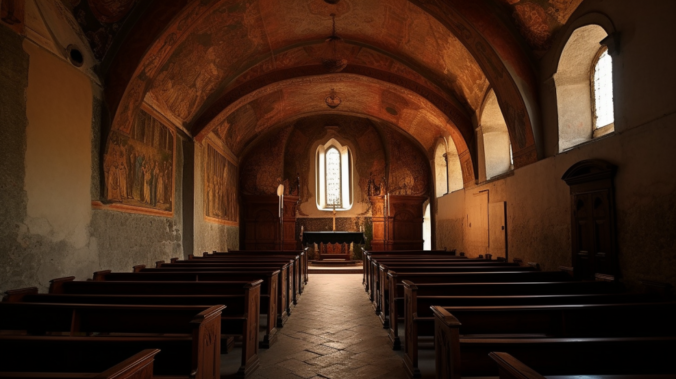Religions have played a significant role in shaping the beliefs, values, and cultures of societies around the world for centuries. Despite their varying practices, rituals, and doctrines, many religions share common themes and principles that reflect the universal human search for meaning and connection. This article delves into the intriguing similarities and differences that exist among various religions, shedding light on both their unifying aspects and their unique expressions.
Similarities Among Religions
1. Moral Guidelines and Ethics
One of the most striking commonalities across different religions is the emphasis on ethical conduct and moral principles. Virtues like compassion, honesty, justice, and empathy are valued in almost every major faith. These shared ethical values provide a foundation for fostering harmonious relationships and a sense of responsibility toward one’s fellow beings.
2. Worship and Rituals
Religions often utilize rituals and practices as a means of connecting with the divine or higher powers. While the specific rituals may vary, the intention behind them is consistent: to express devotion, seek spiritual growth, and forge a connection with the transcendent. Whether it’s prayer, meditation, fasting, or communal gatherings, these rituals serve as a bridge between the material and spiritual realms.
3. Creation Stories and Myths
Many religions incorporate creation myths or stories that explain the origins of the universe, humanity, and the natural world. These narratives offer insights into cultural perspectives on existence and humanity’s place within the cosmos. While the details of these stories differ, they often share thematic elements that speak to the human quest for understanding.
4. Concept of the Divine
While religions may vary in their descriptions and interpretations of the divine, the concept of a higher power or ultimate reality is prevalent in most faiths. Whether it’s the monotheistic belief in a single, all-powerful God, the polytheistic worship of multiple deities, or non-theistic philosophies that focus on cosmic principles, the search for the divine is a unifying aspect of human spirituality.
Differences Among Religions
1. Theology and Beliefs
One of the most noticeable differences among religions lies in their theological doctrines and beliefs. The nature of the divine, the afterlife, salvation, and the purpose of human existence can greatly diverge between faiths. For instance, while Christianity teaches the divinity of Jesus Christ and salvation through faith, Buddhism emphasizes the path to enlightenment and the end of suffering through personal efforts.
2. Practices and Rituals
Though rituals are common to most religions, the specifics of these practices can differ significantly. Hinduism’s intricate rituals, Islam’s daily prayers, and Native American spirituality’s connection to the land all showcase the unique ways in which faith is expressed. These practices are deeply intertwined with cultural contexts and historical influences.
3. Leadership and Authority
The structures of religious organizations, as well as the roles of leaders and authorities, can vary widely. While some religions have centralized leadership, such as the Pope in Catholicism, others have a more decentralized approach, like the diverse forms of leadership in various Indigenous spiritualities. These differences shape the governance and decision-making processes within religious communities.
4. Views on the Afterlife
The notion of what happens after death varies greatly among religions. Some faiths, like Christianity and Islam, hold beliefs in heaven and hell as reward and punishment for one’s actions. In contrast, Eastern religions like Buddhism and Hinduism emphasize concepts of reincarnation and the cycle of rebirth as a means of spiritual growth.
Conclusion
The tapestry of human spirituality is woven with an intricate blend of similarities and differences across various religions. While shared moral principles, rituals, and a quest for the divine create bridges between faiths, the diverse theological beliefs, practices, and views on the afterlife reflect the rich complexity of human thought and culture. Embracing these similarities and differences fosters understanding, tolerance, and the opportunity for dialogue that can contribute to a more harmonious world where diverse religious traditions coexist.
